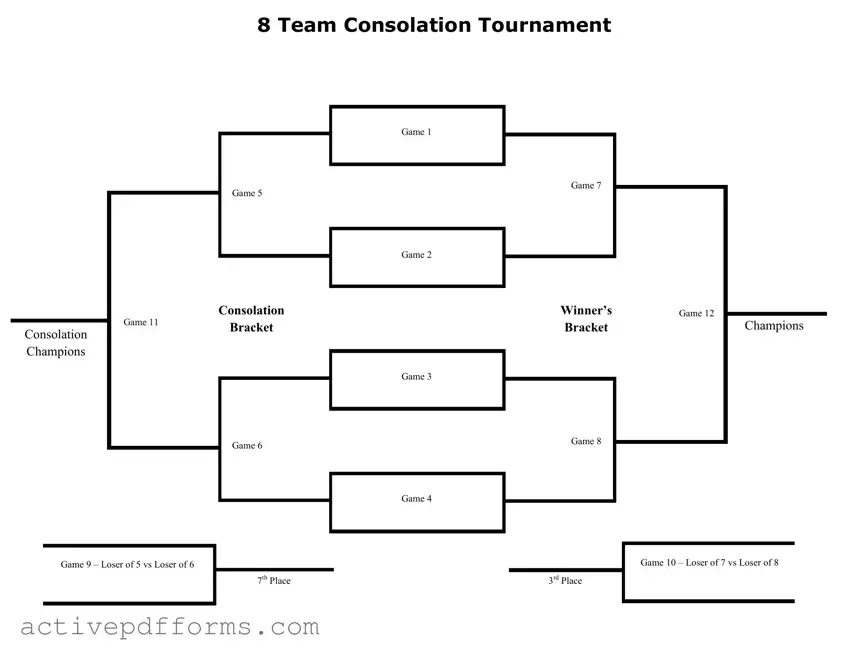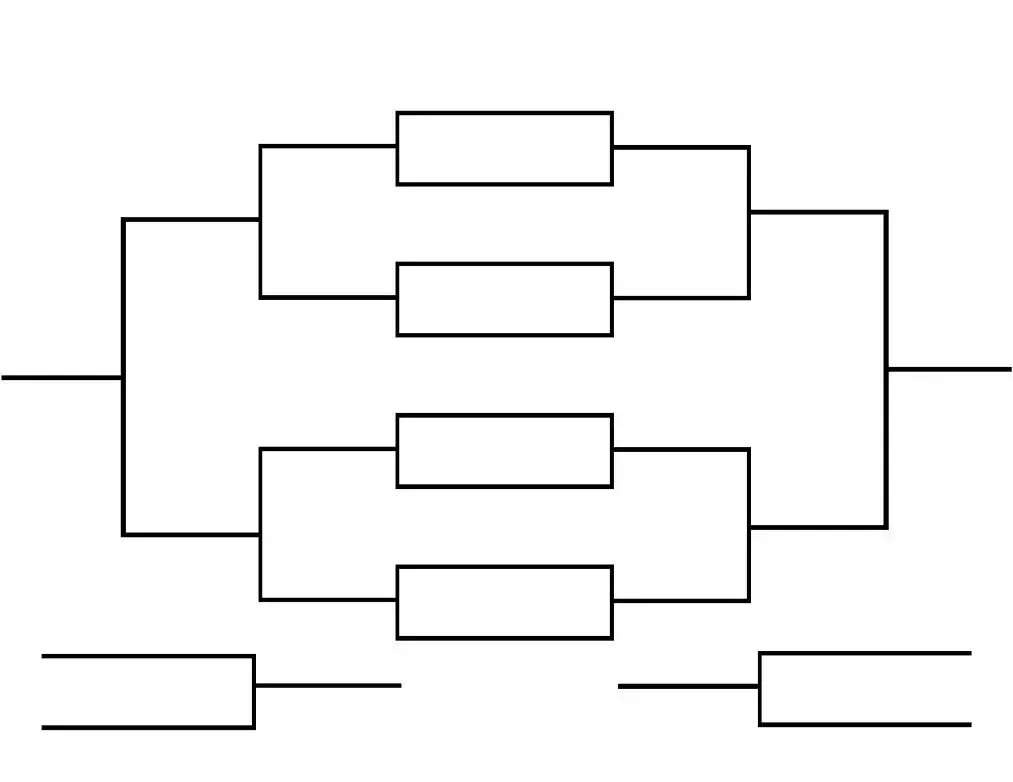Free Tournament Consolation Bracket PDF Template
The Tournament Consolation Bracket form serves as a structured approach to ensure teams that experience an early loss still have the opportunity to compete for a placement. In the model of an 8 Team Consolation Tournament, the structure is delineated into various games where teams navigate through Winner’s and Consolation Brackets to vie for the championship title. This method not only determines the grand champions but also ranks teams up to 7th place, ensuring a comprehensive competition experience.
Edit Tournament Consolation Bracket Now

